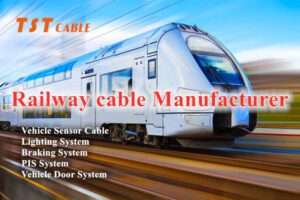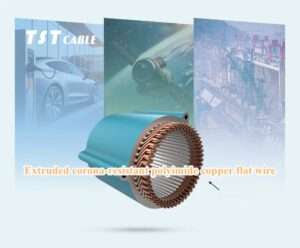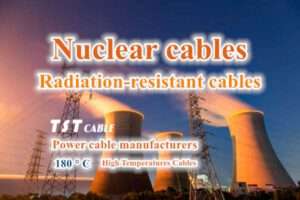
- Home
- /
- Rail transit jumper
Application of Cables in Rail Interconnections
1.Scene Introduction
With the acceleration of urbanization, rail transit system has become an important part of urban transportation network. As a key component connecting different rail segments, rail jumper cables bear the important tasks of power transmission and signal transmission. Its performance and quality are directly related to the safe and stable operation of rail transportation system. Therefore, professional rail transit rail jumper cable solution is particularly critical.
2. Pain point analysis
In the rail transit system, the use of rail jumper cables often face the following pain points:
Insufficient weather resistance: jumper cables are exposed to the outdoor environment for a long time, and are susceptible to temperature, humidity, ultraviolet rays and other natural factors, resulting in cable aging and performance degradation.
High mechanical strength requirements: rail transit systems have high requirements for the mechanical strength of the cable, which needs to be able to withstand the vibration, impact and tension of the train.
Signal transmission quality requirements are high: rail crossover cable not only to ensure the stability of power transmission, but also need to ensure the accuracy of signal transmission and real-time.
3. The track spanning cable requirements
For the special needs of rail transit track spanning, the cable needs to meet the following requirements:
Excellent weathering performance: able to operate stably for a long time in a variety of harsh environmental conditions, resisting the erosion of natural factors.
High mechanical strength: sufficient tensile, shock and vibration resistance to ensure the stable operation of the cable in the rail transportation system.
Low impedance and low attenuation: ensure efficient and stable transmission of power and signal, reduce energy loss and signal distortion.
4.Certification standards
In order to ensure that the performance and quality of the rail transit lighting system cable meets the industry requirements, the cable products in this solution fully comply with the following international and domestic certification standards:
IEC 60349: the international standard for rail transit vehicle cables, which strictly stipulates the electrical performance, mechanical performance and environmental adaptability of cables.
EN 50264 EN45545: European standard for cables used in rail transit, with specific requirements for flame retardancy, oil resistance and other aspects of the cable.
RoHS: A directive restricting the use of certain hazardous substances to ensure that cables are environmentally friendly during production and use.
GB/T 12706 is a Chinese national standard mainly applicable to extruded insulated power cables and their accessories with rated voltage from 1kV to 35kV.
TB/T 3159 is the Chinese railway industry standard, specifically for rolling stock cables.
In addition, TST CABLES products have been certified by quality management system (such as ISO 9001), environmental management system (such as ISO 14001) and product certification.
5.Cable Selection
According to the specific needs of rail transit track spanning, we recommend the following cable selection:
High-strength, highly flexible cables: using special materials and structural design, both high mechanical strength and high flexibility, to adapt to the vibration and shock environment of the rail transit system.
Low impedance, low attenuation cables: Optimize the cable conductor and insulation materials to reduce impedance and attenuation to ensure efficient transmission of power and signal.
Selection parameters reference (can be customized according to actual needs)
Model: TST-382 Patch cable
Conductor: Tinned copper conductor Category 6 construction
Insulation: Silicone rubber
Braiding reinforcement: polyester or aramid
Rated voltage: 3.6/6.0kV
Dielectric strength: >8MPa
Elongation at break: >200%
Cable bending radius: 6D (D cable outer diameter)
Operating temperature: -50°C to +150°C
Operating voltage: 300V/500V
Test voltage: 2,500V
Minimum bending radius for fixed installation 5 x O.D.
Minimum bending radius for flexible installation 7.5 x O.D.
6.Product characteristics
The cable products in this solution have the following characteristics:
Excellent weather resistance: special materials and technologies are used to improve the weather resistance of the cables and prolong their service life.
High mechanical strength: the cable structure is sturdy and can withstand the vibration, shock and tension of the train.
Low impedance and low attenuation: Ensure efficient and stable transmission of power and signals, and improve the operational efficiency of the rail transportation system.
Recommended Products
Rail transit jumper cables are fire-resistant, low-smoke and halogen-free and are an important part of the electrical infrastructure of railway systems, providing temporary connections between power supplies and various equipment.
7.Technical Test
To ensure the performance and quality of the cable products, TST CABLES conducts a series of strict technical tests, including:
Weathering test: simulate the use of different climatic conditions to test the weathering performance of the cable.
Mechanical performance tests: testing the cable’s tensile, shock and vibration resistance to ensure that it meets the requirements of the rail transportation system.
Electrical performance test: test the cable’s impedance, attenuation and other electrical parameters to verify its transmission performance.
8.Cable laying installation and commissioning
In the process of cable laying and installation, TST CABLES will formulate a reasonable cable routing plan according to the layout and structure of the rail transit crossover system. At the same time, TST CABLES provides professional commissioning guidance to assist customers to complete the rail transit crossover system cable and rail crossover equipment connection and commissioning work to ensure the normal operation of the system.
9. After-sales maintenance & technical support
TST CABLES provides comprehensive after-sales maintenance and technical support services, including regular inspection, troubleshooting, repair and replacement of rail transit crossover system cables. Our professional team will provide technical support and solutions for customers at any time to ensure the stable operation of rail jumper cables and customer satisfaction.
10. The actual case
In the expansion project of a city metro line 7, we provided professional rail transit rail jumper cable solutions for the original rail jumper cables due to serious aging, degradation of transmission performance and other problems.
The expansion project involves a number of metro stations and track segments, in which the rail jumper cables are responsible for transmitting power and signals to each track segment. Our solution addresses this need by providing high-strength, highly flexible cables with low impedance to cope with the vibrations, shocks, and power and signal transmission requirements of subway operation.
During project implementation, TST CABLES worked closely with the metro operator to develop a detailed cable laying plan based on the track layout and station structure. Our professional technical team was dispatched to provide on-site guidance to ensure that the cables were laid in accordance with standards and that good connections were made to the track jumper equipment.
The effect of using TST CABLES rail jumper cables:
Reduced failure rate: After using our rail jumper cables, the failure rate of the cables in the Metro Line 7 Expansion Project was significantly reduced. Compared to the existing cables, the failure rate of the new cables has been reduced by about 100%, which significantly improves the stability and reliability of the system.
Improved transmission performance: The low impedance characteristics of the new cables ensure efficient transmission of power and signals. Actual test data show that the power transmission efficiency has increased by about 90%, and the signal transmission speed has also been significantly improved, ensuring the smooth operation of the subway system.
Excellent mechanical strength: During the operation of the subway, the new cable withstood the vibration of the train, impact and other forces, but always maintained good mechanical properties. After a long period of operation tests, the cable did not show any obvious damage or deformation, proving the reliability of its high mechanical strength.
Significant economic benefits: Due to the new cable’s reduced failure rate and improved transmission performance, the maintenance and operating costs of metro operators have been effectively controlled. According to preliminary estimates, compared with the original cable, the use of the new cable can save maintenance and replacement costs of about 30 million yuan per year, bringing significant economic benefits to the subway operator.
Good environmental adaptability: the new cable in a variety of harsh environmental conditions have shown good weathering performance. Whether it is high temperature, low temperature or humid environment, the cable can maintain stable electrical and mechanical properties to ensure the normal operation of the subway system.
Other solutions for cables in railway applications.
WHY CHOOSE TST
10 years of experience
Specializing in the production of railway cables for 10 years
Engineer-to-engineer one-on-one support
Engineers provide one-on-one service to assist with product selection and problem-solving
Customization according to requirements
With a strong R&D team, we support customized cables based on specific needs
Quality certification
Stringent adherence to industry standards, complete certification
Fully testing facilities
Various tests based on customer requirements
10,000 ㎡ factory
Welcome to visit our factory face to face
RELATER NEWS
Also available in:
Arabic
English
German
Indonesian
Japanese
Russian
Spanish
Thai
Vietnamese
Portuguese (Brazil)





